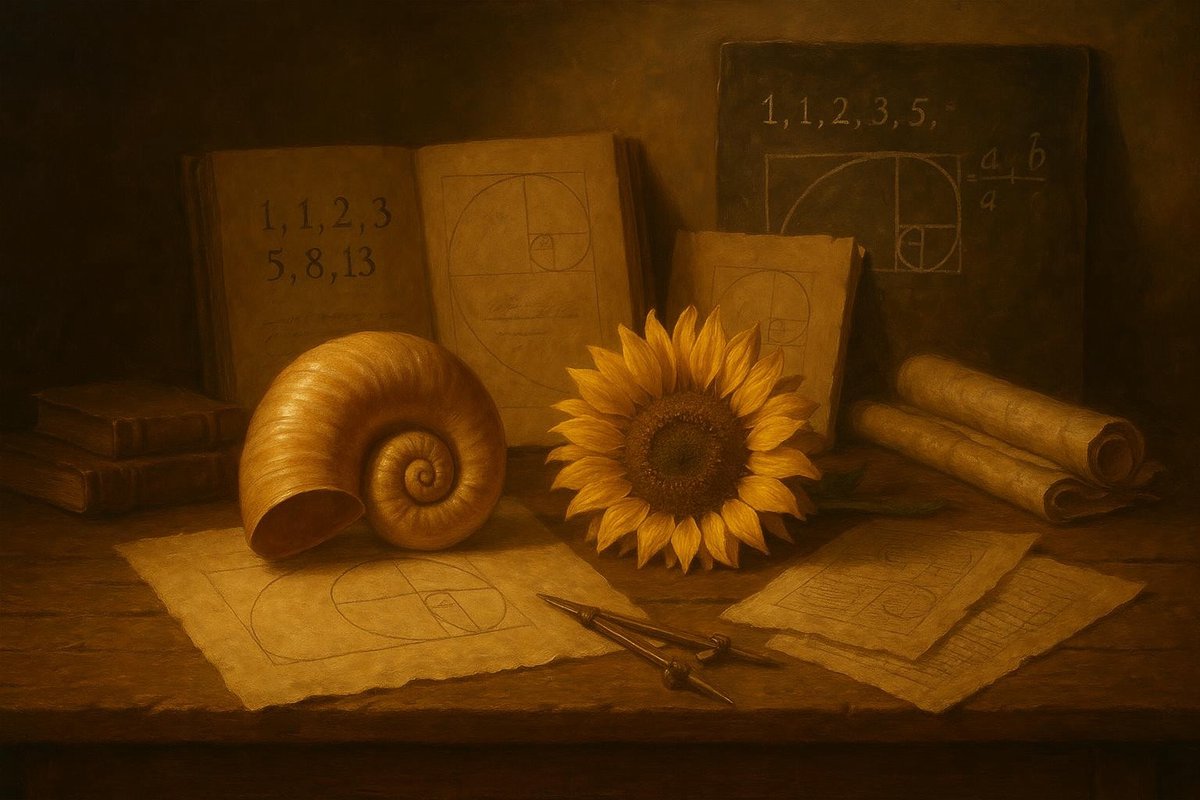
The Golden Ratio: A Timeless Proportion in Nature and Art
Have you ever wondered why certain shapes and designs feel so naturally pleasing to the eye? It’s no wonder many find themselves drawn to the spiral of a seashell or the symmetry of a flower. These aesthetically pleasing forms often bear the mark of the Golden Ratio, an ancient mathematical concept intertwined with beauty and harmony.
Hypothesis & Context: The Quest for Perfect Proportion
Interestingly, the quest for perfect proportion dates back to antiquity. Greek mathematicians, like Euclid, were captivated by the idea that there might be a ‘divine proportion’ underpinning the structures of the universe. This notion wasn’t merely about numbers; it was a philosophical pursuit to unearth the balance in nature and art.
- The Greeks believed in harmony and symmetry as the essence of beauty.
- The concept of symmetria drove early architectural and artistic endeavors.
- Philosophers like Plato speculated about ideal forms, sparking debate over mathematical truths.
As time went on, these musings about proportion and beauty laid the groundwork for one of the most intriguing discoveries in mathematics, a tool that would eventually become indispensable in design, architecture, and art: the Golden Ratio.
Setup & Method: From Fibonacci to the Divine Proportion
Fast forward to the Middle Ages, a man named Leonardo of Pisa, known as Fibonacci, stumbled upon a sequence that would later reveal the Golden Ratio. The Fibonacci sequence—starting with 0 and 1, where each subsequent number is the sum of the two preceding ones—captures a curious pattern that approaches the Golden Ratio as it progresses.
- Fibonacci’s sequence was initially a mathematical curiosity.
- The sequence’s ratios converge to approximately 1.618, known as phi (Φ).
- This ratio appeared in various natural phenomena, sparking further intrigue.
Much like a detective piecing together clues, Fibonacci’s findings reignited interest in the mathematical and aesthetic applications of this elusive ratio. As mathematicians delved deeper, the Golden Ratio’s pervasive presence became undeniable.
Results & Reactions: Aesthetic Revelation Across Cultures
As the story of the Golden Ratio unfolded, it became clear that its allure transcended mere numbers. Artists, architects, and thinkers across cultures began to embrace this peculiar ratio, seeing it as a key to unlocking the secrets of harmonious design.
- Renaissance artists like Leonardo da Vinci employed the Golden Ratio in their masterpieces.
- The Parthenon’s architecture exemplified its aesthetic appeal.
- Modern design continues to harness the Golden Ratio’s timeless charm.
Debates over the extent of the Golden Ratio’s influence persist. Critics question its omnipresence, while proponents see it as a universal truth woven into the fabric of reality. As a result, this mathematical marvel continues to inspire discussion and exploration in fields far beyond mathematics.
Implications: An Enduring Legacy in Mathematics and Beyond
The Golden Ratio’s journey from ancient speculation to modern application highlights its extraordinary impact. Today, it plays a crucial role not only in art and architecture but also in fields like finance, nature studies, and even music, where it provides a framework for understanding beauty and balance.
- Elliott Wave Theory in finance uses the ratio to predict market trends.
- Nature’s spirals, from galaxies to hurricanes, exhibit the ratio’s influence.
- The ratio offers insights into growth patterns and biological efficiency.
Ultimately, the Golden Ratio stands as a testament to humanity’s enduring quest for knowledge and beauty. It reminds us that mathematics, at its core, is not just about numbers but about finding order and elegance in the chaotic tapestry of existence.
In conclusion, the Golden Ratio’s allure lies in its seamless blend of mathematics and aesthetics, illuminating the profound connections between art and science.
Fuel Someone Else’s Curiosity
If this exploration into the Golden Ratio has sparked your interest, why not share the wonder? Engage with fellow enthusiasts, ignite discussions, and let others marvel at the beauty of mathematics woven into the world around us. As we continue to unravel these ancient mysteries, we participate in a grand tradition of inquiry and discovery.

Leave a Reply